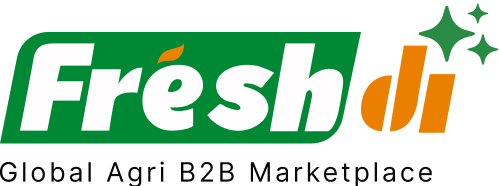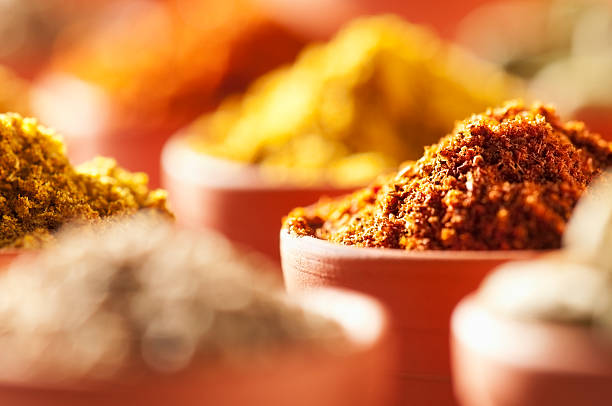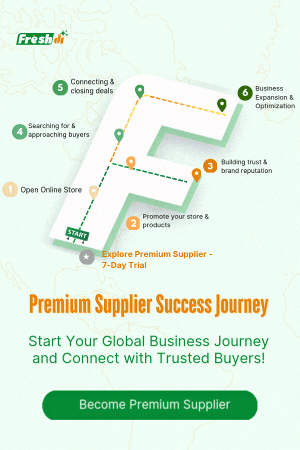Introduction – Austria’s Spices Market in Statistical Focus
Austria might not be the first country that comes to mind when you think about spices, but it holds a surprisingly solid position in the global spice trade. In 2023 alone, Austria exported around 2.19 million kilograms of mixed spices, raking in a value of $22.76 million. That puts it at ninth place globally, controlling roughly 1.66% of the global export share (reportlinker.com).
Who’s buying Austrian spices? The biggest fans seem to be:
- Germany – 40.09% share ($9.12 million)
- Russia – 27.28% share ($6.21 million)
- Switzerland – 4.62% share ($1.05 million)
- Hungary – 4.04% share ($919,220)
- France – 3.78% share ($860,800)
Together, these countries account for 80% of Austria’s spice exports (tridge.com).
But Austria isn’t just an exporter—it’s also a major importer of spices. In 2023, imports reached 2.94 million kilograms, an 18.62% increase from the previous year. Its top import partners include:
- Germany – $5.4 million (702,885 kg)
- Hungary – $911,200 (343,466 kg)
- Netherlands, Czech Republic, and Italy round out the list.
That’s a lot of spice going in and out of Austria. This dynamic trade flow shows a country deeply integrated into the European spice network, with strong ties to both producers and consumers.
Deep Dive – Key Production, Export Statistics & Demand Insights
Let’s zoom in a bit more. Austria’s spice exports are dominated by mixed spices, which are blends used in everything from sausages to stews. The country’s proximity to major European markets and its efficient logistics make it a strategic hub for spice distribution.
But what really reflects market reality is buyer behavior. On B2B platforms like Freshdi, RFQ (Request for Quotation) volumes suggest increasing demand for verified suppliers of high-quality spice mixtures. Buyers are not only seeking volume—they’re looking for safety, traceability, and consistent flavor profiles.
Freshdi’s backend analytics show that Austria-based suppliers are frequently shortlisted by European buyers for both custom spice blends and bulk orders, which reflects their growing trustworthiness and tangible performance in the global marketplace.
Top 10 Verified Spices Suppliers in Austria – Top Tier Based on Export Data
Choosing the right supplier is all about credibility, consistency, and compliance. Based on export performance, certifications, and buyer reviews on platforms like Freshdi, here are the Top 10 Verified Spices Suppliers in Austria to watch in 2025:
- JOMA KUNSTSTOFFTECHNIK GMBH
- Specializes in spice grinders and packaging solutions.
- Known for innovation in spice dispensing systems.
-
Strong export performance across Europe.
-
Alpin Gewürze GmbH
- Offers authentic Alpine herb and spice blends.
- HACCP-certified and focused on organic products.
-
Popular among gourmet food manufacturers.
-
Kotányi GmbH
- A household name in Austria and beyond.
- Wide product range: from pepper to exotic blends.
-
ISO-certified and active in over 40 countries.
-
Wiberg GmbH
- Focused on high-end spice solutions for the foodservice industry.
- Strong R&D for flavor innovation.
-
Known for clean-label and allergen-free blends.
-
Sonnentor Kräuterhandels GmbH
- Pioneers in organic spices and herbs.
- Deep sustainability focus and fair-trade practices.
-
Exporting to over 50 countries.
-
Würzerei GmbH
- Emphasizes natural, additive-free spices.
- Custom spice blending services.
-
B2B-focused with a growing online presence.
-
Schuhbeck Gewürze Austria
- Premium spice blends by celebrity chef Alfons Schuhbeck.
- Great for gourmet and high-end retail.
-
High buyer retention due to consistency and quality.
-
Spiceworld GmbH
- Offers over 1,000 spice varieties.
- Interactive B2B platform for custom orders.
-
Strong in logistics and just-in-time delivery.
-
Fuchs Austria GmbH
- Subsidiary of the global Fuchs Group.
- Covers both retail and industrial spice needs.
-
Robust distribution network across Europe.
-
Salzhäusl Naturprodukte GmbH
- Mixes traditional Austrian herbs with global spices.
- Focused on wellness and natural healing blends.
- Niche positioning with strong B2C crossover potential.
Dynamic Ranking Note:
Platforms like Freshdi offer real-time supplier rankings based on things like recent transactions, buyer reviews, and response time. So, while this list reflects top performance as of early 2025, monthly or quarterly updates may showcase rising stars or seasonal leaders.
Market Navigation – Statistical Trends, Price Insights & Export Dynamics
Let’s talk trends. Spice consumption in Austria and its export destinations is shifting. The data from Freshdi shows a spike in RFQs for:
- Organic spice blends
- No-salt seasoning mixes
- Functional spices (like turmeric, ginger, and chili)
This isn’t just a fad. Consumers are becoming more health-conscious, and that’s influencing what buyers look for. Exporters who can meet these preferences—especially with the right certifications—are seeing higher margins and faster deal closures.
What about prices? Spice prices are seasonal and geo-sensitive. Prices for cardamom and saffron, for example, are often volatile due to geopolitical tensions in source countries. Historical data from Freshdi shows price spikes during Q3 and Q4, aligning with holiday season demand in Europe.
Savvy buyers leverage this data to lock in contracts before prices surge. Suppliers with transparent pricing histories are usually favored during RFQ evaluations.
Conclusion – Leveraging Data for Optimized Supply Chains
Austria’s spice market is more than just stable—it’s strategically positioned for growth. With over $22 million in exports and increasing import volumes, it plays a central role in connecting European spice producers and consumers.
For B2B buyers, the key takeaway is this: don’t rely on assumptions or outdated contacts. Use real-time data, supplier verification metrics, and buyer reviews to make informed decisions. Platforms like Freshdi make this easy by giving you access to:
- Verified supplier profiles
- RFQ trends by region and product
- Price analytics over time
- Supplier performance benchmarks
Whether you’re sourcing paprika for a food brand or turmeric for a supplement line, Austria has the infrastructure, quality, and supplier diversity to meet your needs.
Key Takeaways
- Austria is the 9th-largest global exporter of mixed spices.
- Major export destinations include Germany, Russia, and Switzerland.
- Import volumes are also rising, indicating a robust domestic demand.
- Top suppliers are focused on quality, traceability, and certifications.
- Platforms like Freshdi empower buyers with supplier verification and market intelligence.
Buyer’s Checklist: Spices Sourcing in Austria (2025)
- ✅ Check supplier certifications (ISO, HACCP, Organic, etc.)
- ✅ Compare seasonal RFQ trends on platforms like Freshdi
- ✅ Lock in prices before Q4 demand surges
- ✅ Validate logistics and delivery capabilities
- ✅ Monitor dynamic supplier rankings on Freshdi for top performers
Future Outlook
Looking ahead, Austria is expected to expand its spice export footprint, especially in organic and functional spice segments. As consumer preferences evolve, suppliers that innovate—both in product and presentation—will rise to the top.
Buyers who stay ahead of trends by using predictive platforms like Freshdi can avoid supply chain disruptions, negotiate better deals, and discover hidden gems in the supplier ecosystem.
FAQs
1. What types of spices are most commonly exported from Austria?
Austria primarily exports mixed spices, which include blends for cooking, seasoning, and food manufacturing.
2. Why is Germany the largest importer of Austrian spices?
Germany shares a border with Austria, making logistics efficient. There’s also a long-standing trade relationship and culinary overlap.
3. Are Austrian spice suppliers compliant with international food safety standards?
Yes, most top suppliers hold certifications like ISO 22000, HACCP, and EU Organic to ensure compliance.
4. How can I verify a supplier’s credibility?
Use platforms like Freshdi to check verified profiles, buyer reviews, certifications, and export history.
5. When is the best time to source spices from Austria?
Ideally before Q4, as demand (and prices) increase due to the holiday season. Monitor seasonal trends using Freshdi’s analytics.
References
- ReportLinker – Austria Spice Export Data 2023
- Tridge – Austria Mixed Spices Export Market
- World Bank – Austria Spice Trade Statistics
- IndexBox – Austria Spices Market Analysis
- Freshdi – Verified Supplier Platform


